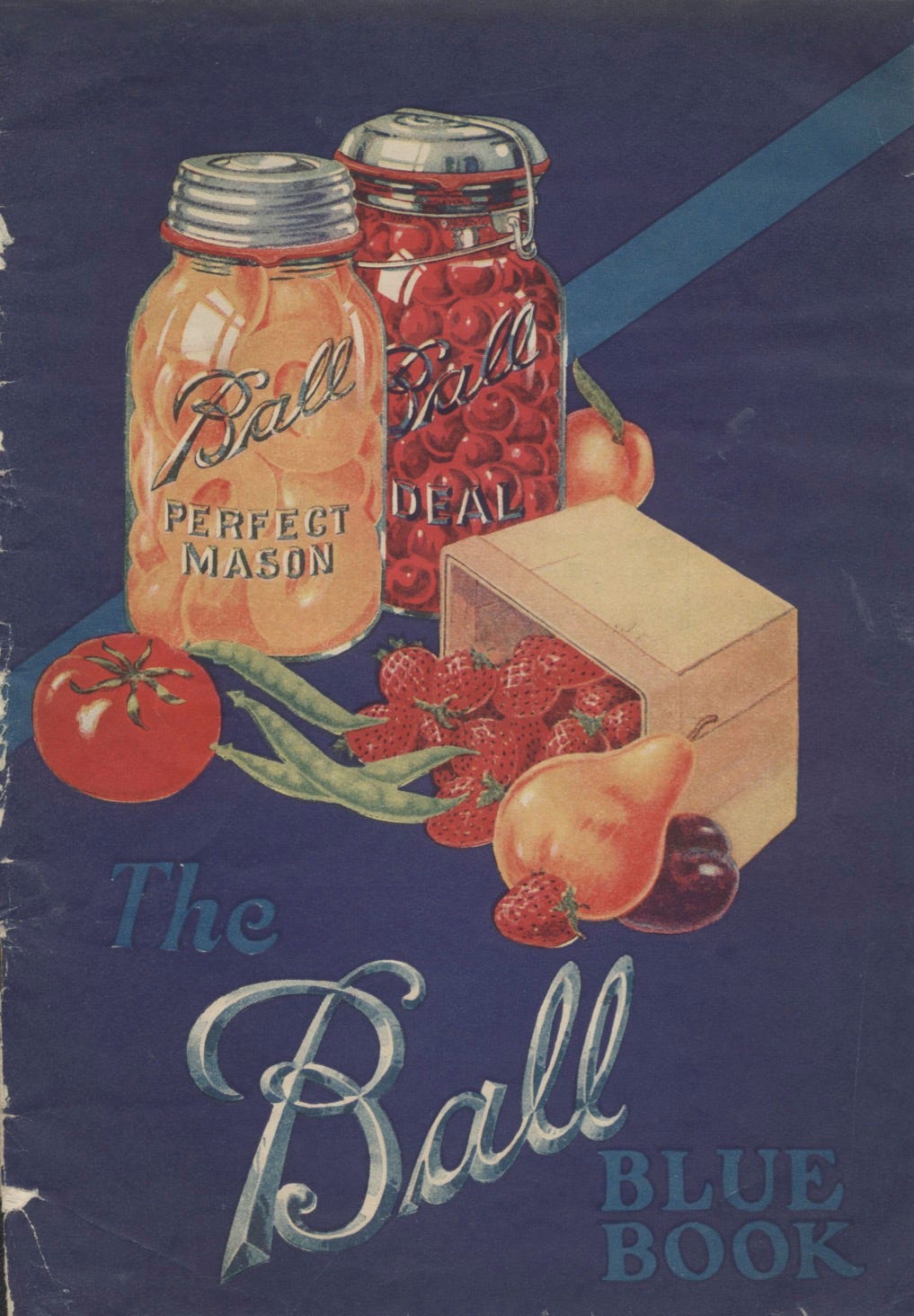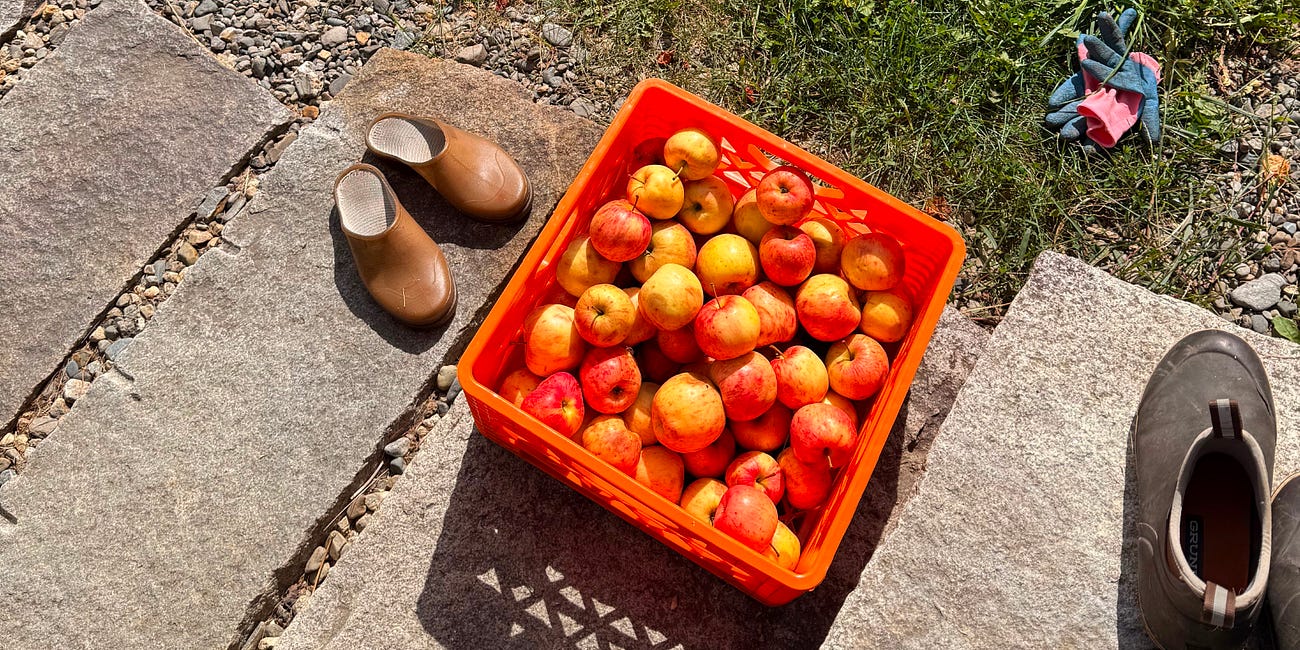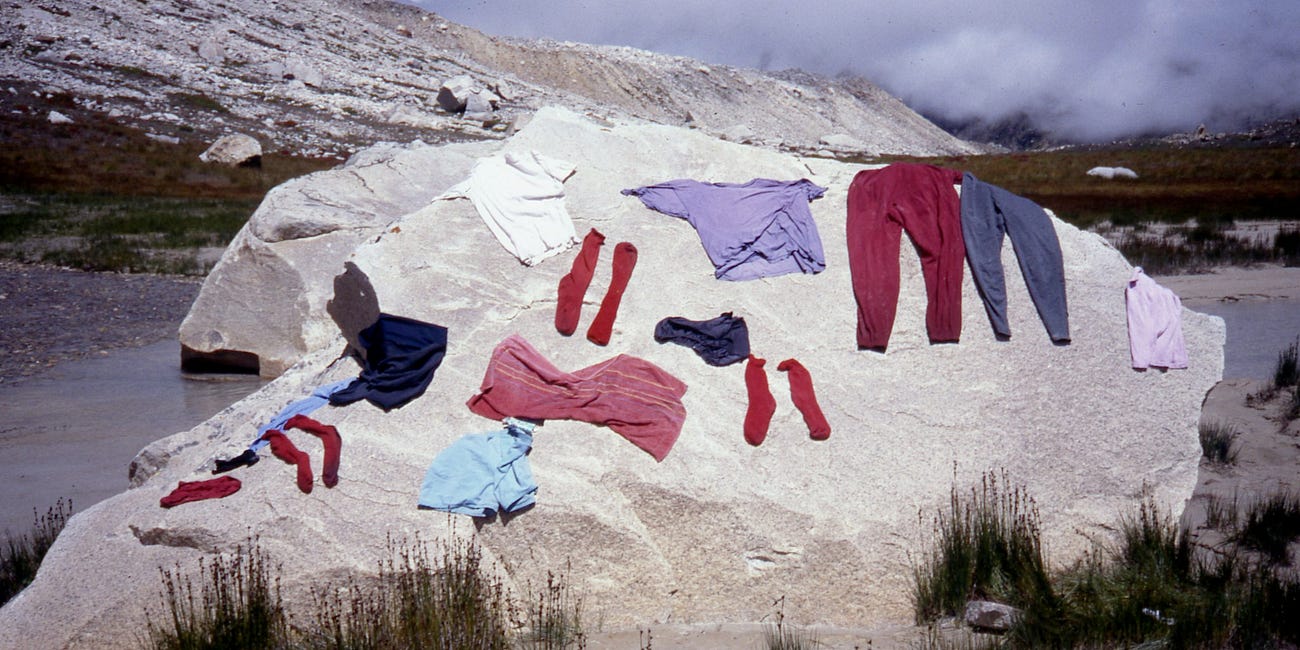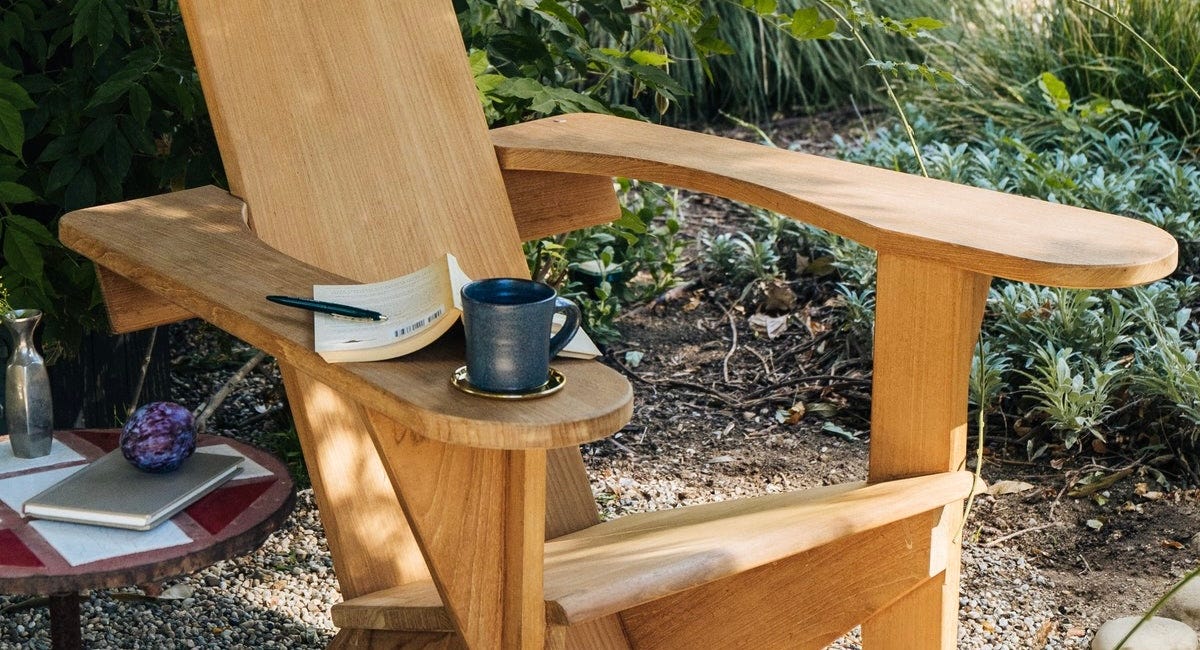Done hearing about apples? Too bad! This year is what’s called a mast year, which happens every 5-10 years and certain trees go absolutely nuts, producing lots and lots of fruit. Or nuts. So: Apples are on. the. mind. And—what to do with them. Last week, I did some digging around for a reader to figure out the cider press landscape. Today, we’re talking about canning—specifically, the scarier parts: dealing with and banishing contaminants like molds, yeasts, and bacteria.
When you find yourself in two different conversations about botulism on the same day, it’s probably a good time to figure out how to confidently can (or process or put up) all that fruit and veg. Right?
I’ve done some, but not much, putting up apple sauce, strawberry jam, and dilly beans using instructions online. So far, we’ve all been safe, but could I confidently recommend what I’ve been up to? Probably not.
My friend Al reminded me of the Ball Blue Book, the classic canning tome (actually more like a bookazine, she’s a quick read) and longtime authority on how to do this safely. I had a copy a long, long time ago, but gave it to another friend and well, the rest is history with that one!
Alright already, enough about how much I like my people—I picked up a new copy yesterday, cross-referenced with what I’ve been up to, and thought it might be helpful to distill some of it in one place. You can use it as a quick reference, a jumping-off point, or just something to do for the next 10 minutes. (Although, I definitely recommend picking up the actual guide, more on why below.)
The very tip-top thing that is scary about making food shelf stable is the lurking question of “Will this make us very, very sick?” Which is fair.
The three things that can make you sick are molds, yeasts, and bacteria. There are also natural enzymes present that break food down and can just make things unappetizing. Each of these contaminants can be eliminated depending on the right amount of acid and the right amount of heat (and length of exposure to that temperature).
Quick pause: The Blue Book sends you in two directions (also, incidentally, the only directions I have ever personally explored): Water Bath Canning and Pressure Canner… Canning. The acidity of your food is what will determine your technique.
Let’s start with acid. All foods (and everything else) have their own natural pH; those with higher acidity require less heat (212°F, the temperature of boiling water) to eliminate contaminants. Therefore, high acidity foods can be processed in a water bath.
Water bath canning is really simple: Sterile jars, packed and lidded, go into a huge pot, fitted with a bottom rack (it can even just be a cooling rack, you just don’t want the jars directly on the bottom), brought to a boil, and kept in boiling water for as long as your recipe recommends.
More alkaline foods (still relatively acidic, though) need to be held at 240° to fully eliminate contaminants and for this you will need a pressure canner. Steam is hotter than boiling water and this is what’s required! Pressure canners are a little more technical, but, as ever (?), the internet is extremely helpful. For reference, I have this canner and followed along with this video. (And manufacturer’s instructions, but, you know, sometimes one needs some extra attention.)
Ok! Simple enough, right? Sort of. Sometimes it can be hard to fully know the pH of your food. Take a bolognese sauce for instance. That’s a lotta tomatoes! Must be acidic? But, after you add in all the other stuff, it actually tips over into the lower acidity category and should be processed in a pressure canner.
Which leads me to the PSA that I personally had been missing from my own attempts at processing… The importance of using recipes that are made for canning, not just pickling vegetables or making jam from fruits—and putting into a refrigerator for 2 weeks. For instance, you (by which I mean me) could be tempted to use a delicious sounding recipe for quick pickles, which are meant to be either enjoyed right away for stored in the fridge and eaten relatively soon. That recipe might not—it could, but it also might not—have the correct acidity to ultimately be shelf stable. Catch my drift here?
Which is why—and I teased this earlier—I would definitely recommend picking up the Blue Book, or similar, to get a good foundation of recipes designed to be shelf stable.1
To review!
Food contaminants die at different temperatures: molds, yeasts, bacteria in high acidity foods at 180°-212°; remaining bacterial spores in low acid foods at 240°.2
Water Bath Canning is adequate for high acidity foods.
Pressure Canning is safest for low acidity foods.
High acidity foods include: Lemons, Pickles, Fruit (including apples and tomatoes), Sauerkraut.
Low acidity foods include: Okra, Carrots, Beets and their relatives, Green Beans, Peas, Corn.
That more or less covers what you need to know about removing threats from canned foods—would you be interested in me GOING ON AND ON about more aspects of canning? Like, how to actually do it?
Thanks for reading, pals! See you next week!
Actual, honest-to-someone treehouse, for sale, for adults, in Kentucky. (LINK)
The latest hand quilting series at Tatter is coming in October. I’m a pretty big fan of Hawaiian appliqué which is the first class in the series! Make a quilt! Show it to me later! (LINK)
OMG. (LINK)
You could be a farmer in… this free (!) John Deere power wheels in Berkeley. (LINK)
Everything You Always Wanted To Know About Pressing Apples Into Cider
Sometimes, inspiration strikes. Other times, someone gets in touch with a stirring question that needs immediate and thorough investigation. The muse has many ways!
The Official Treehouse Analysis of "All Fours"
Last year, like countless other elder millennials and their counterparts, I read a book whose hype grew to such a fever pitch that it became required reading, Miranda July’s All Fours. The rippling effects of this book can’t really be understated: people are talking
When The World’s Most Ubiquitous Summer Chair Stole My Attention, Heart, Mind (Sanity?)
Several months ago, an outdoor collection surfaced that really got me revved up and the star piece, in my humble opinion, was a relaxing-ish looking wooden chair. By all appearances, it had the general lines of a typical Adirondack chair, but the precise vernacular was pretty different. It didn’t evoke feelings o…
That said, the never-quite-satisfied-by-a-single-answer part of me wonders if you could just process these recipes in the pressure canner and be able to use the recipes you DAMN WELL PLEASE. Will dig into this more, later. Or if you know, please comment!
These temps only refer to 1000ft altitude and below—you’ll need to look up your temps if you live way up there.









"Done hearing about apples? Too bad." is one of the greatest newsletter openers I've ever read.